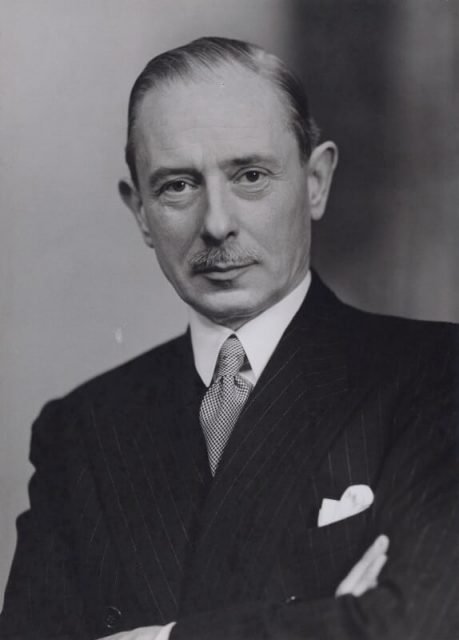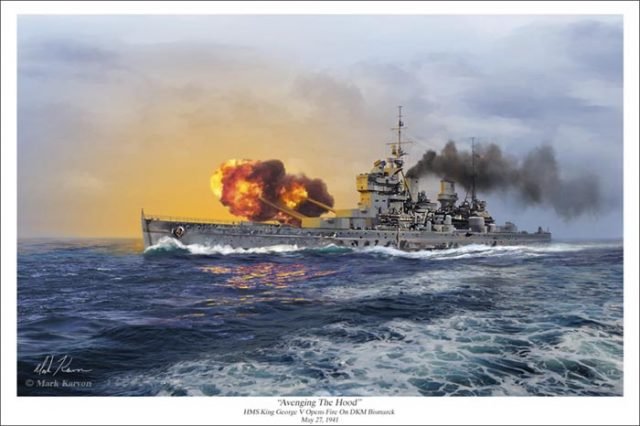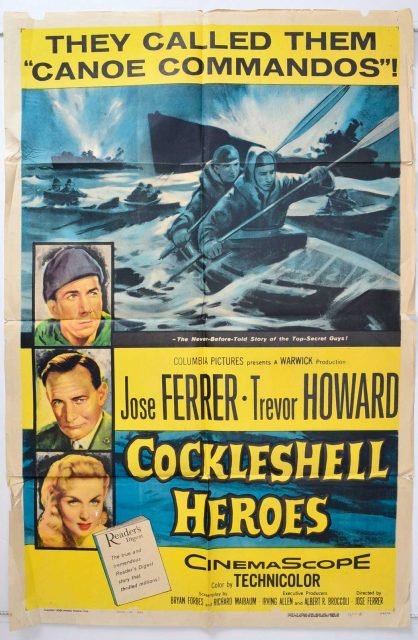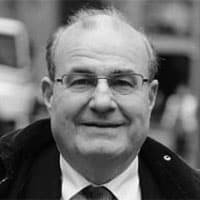
Yes, I have looked at the memo, but that’s for next week! I did not want to be blown of course by events, again, so now for the second instalment of my column on the flight of Deputy Führer Rudolf Hess to Britain on May 10th 1941. Regarded as an oddity and a sideshow by most historians, the Hess flight was actually part of a combined coup against both Winston Churchill and Adolf Hitler and was one of the most sinister events of the 20th century.
To recap. At 2306 British Double Summer Time on Saturday May 10th 1941 the Deputy Führer of Nazi Germany and third person in the Nazi hierarchy after our community partners Adolf Hitler and Hermann Göring, Reichsminister Rudolf Hess, baled out of a Messerschmitt Bf 110E-2 twin-engined fighter over Eaglesham, south-west Scotland. He had taken off from the Messerschmitt airfield at Augsburg, near Munich, at 1745 local time, which happened to coincide with 1745 British Double Summer Time.
Forget the nonsense on Wikipedia, which with typical intellectual dishonesty ignores research it can’t deal with, in this case the ground-breaking work of John Harris and Richard Wilbourn. Wikipedia would have you leave that Hess flew non-stop from Augsburg to the bale-out point over Eaglesham and that his destination was the Duke of Hamilton’s hunting lodge at Dungavel House. Wikipedia also has Hess flying over the heavily-defended Ruhr and smears Hess as “mentally unstable”. As with so much else on Wikipedia this is pure nonsense, desperately in need of fact-checking.
As I explained last week, Hess’s aircraft, works number 3869, radio code VJ+OQ, was not fitted with an auxiliary oil tank. It therefore lacked the range to fly from Augsburg to Scotland at power settings commensurate with the speeds Hess is known to have flown at. Hess landed at a Luftwaffe airfield en route, where his aircraft was refueled and two 900-liter auxiliary fuel tanks were fitted (pace Wikipedia, Hess’s aircraft was probably not fitted with auxiliary fuel tanks when it took off from Augsburg – as the first leg of the flight was scheduled for 55 minutes they were not needed). His two 35-liter oil tanks were no doubt topped up at the same time.
Presumably deliberately, in order to distort the facts and mislead its readers, the Wikipedia entry on the flight suppresses all mention of the fact the Bf 110 was not fitted with an auxiliary oil tank. Whilst giving the airstrip at Dungavel House as the destination the Wikipedia entry also carefully avoids giving the maximum runway length of the tiny airstrip at Dungavel. The Bf 110E was a fast, powerful, heavy, bomber destroyer requiring at least 600 yards to get down safely.
Only an aviation illiterate or someone who had not checked their facts could possibly suppose that Dungavel House was the destination. Hess claimed it was, but he was clearly lying, as are Wikipedia. Nor for the first time Wiki editors have been caught out in a deception operation.
It really is time that Wikipedia cleaned up their act. Their willingness to distort the truth is shameful, although their skill at deceiving their readers, many of whom are young and gullible, might have attracted the admiration of our community partner Dr Josef Goebbels. Sadly, it is no surprise to find that Wikipedia are pushing a propaganda line first put out by the pernicious Nazi spin-doctor, such a slimeball that he could have worked for the Democratic National Committee, no offense to Dr Goebbels intended.
Based in part on Hess’s navigational chart and his pilot’s notes, supplied by the noted human rights lawyer, the late Professor Simpson (whom I met many years ago at law school), Harris and Wilbourn supply persuasive arguments for concluding that Hess’s real destination was RAF Dundonald, referred to by the Luftwaffe as Irvine. I think they’re right. You can forget Dungavel House, in fact Hess screamed over it at around 5,000 ft, doing an estimated 270 knots – not exactly circuit height or approach speed.

British air defenses were partly stood down to let Hess land. AA batteries in the Glasgow area were warned not to open fire and as I explained last week Spitfires from RAF Aldergrove were ordered not to intercept. One RAF aircraft did try to intercept him, however, a Boulton-Paul Defiant night-fighter of 141 Squadron, flown by Squadron Leader (as he became) Arthur Cuddie, of Regina, Saskatchewan. It was scrambled at 2234 from the newly opened RAF Station at Ayr, very obviously after word of the coup reached Churchill (we know that Ernest Bevin had a source in Augsburg and flashed a warning to the Prime Minister, but doubtless he had other sources as well).
As Harris and Wilbourn discovered, the Defiant was vectored towards Dundonald. On that dark night over south-west Scotland, Arthur Cuddie, had he but known it, and his gunner, Hodge, were point men for Western Civilisation. No more dangerous enemy than Hess ever flew in Britain’s skies in World War II. He wasn’t a Nazi, he was Abwehr.
Harried by Cuddie and Hodge’s Defiant, the Deputy Führer was forced to abandon his attempt to land at Dundonald. With nowhere else to go and running short of fuel, Hess baled out shortly afterwards. (Tragically, Squadron Leader Cuddie was shot down when attacking an Axis convoy near Kos on October 3rd, 1943 in his Bristol Beaufighter Mark XI.)

Knowing that they’d been spotted and that Hess wasn’t coming, the meet and greet party at Dundonald, which may have included HRH the Duke of Kent, scattered. No surprises there!
Was it Hess?
Of course it was. The theory pushed by Dr Hugh Thomas, that the man he examined at Spandau wasn’t Hess, has been thoroughly and rightly discredited. The idea was that the man Dr Thomas examined did not have a scar from a wound Hess is known to have suffered in World War I, but in fact a thin scar was noted at post-portem by that nice man Dr James Cameron, whose lecture on forensic pathology I thoroughly enjoyed as a Bar student!
Rudolf Hess was also acknowledged as such in Spandau Prison by his wife, Ilse, and son Rüdiger. Generally speaking, doppelgangers only work from a distance. It’s a bit difficult to fool a wife.
Where did Hess land en route?
It’s difficult to argue with Harris and Wilbourn’s conclusion that Hess refueled at Göttingen, where the Horten brothers were engaged in secret aeronautical research. Göttingen is 385 kilometers from Augsburg and was handily placed for the probable entry point to the North Sea, at Borkum, with its distinctive light house. You can forget flying over the Ruhr. That’s for Wikinuts, i.e. people who believe everything they read on Wikipedia.
What went wrong?
Again, it’s difficult to argue with John Harris and his colleague, who have looked at the flight more closely than any other author. Certainly their analysis is way more sophisticated than the drivel you’ll find on Wikipedia, no offense intended. I think that Hess made it to Waypoint B alright – it was a straightforward compass course from Borkum and Hess had the advantage of the then secret Elektra radio navigation system, on which he had been trained. The route from Borkum to Waypoint B took Hess to the east of RAF Coastal Command patrols and was outside the range of the Chain Home radar early warning system.
I respectfully agree with Harris and Wilbourn that Waypoint C, as referred to in Hess’s pilot’s notes, was 170 kilometers (Hess was a Jerry and therefore used the inferior metric system) from Waypoint B and set him up for a 245o angle of entry to the British mainland near the Farne Islands, evading Coastal Command patrols. Since Menzies at MI6 was in on the coup, Hess would almost certainly have been warned, probably via the Abwehr’s Frank Foley, who flew to Lisbon before the flight, about our Coastal Command patrols. These patrols were not just mounted against U-Boats, but acted as part of our early-warning system, putting Mark I eyeballs out beyond the range of the Chain Home stations.

Waypoint C was on a reciprocal bearing of 117o to the Elektra station at Husum (E2). His course from Waypoint C would have been bounded by the 237o and 226.7o Elektra radials, as marked on his map, which is on display at the Lennoxlove Museum. The Elektra frequencies would have been pre-set on the Lorenz FuG 10EL receiver with which his Bf 110 was equipped.
Hess missed Waypoint C however, forcing him to retrace his tracks to Waypoint B. If he was to avoid the British air defenses he had little choice. His route was carefully worked out, to maximise his opportunities of safely penetrating British airspace and traversing Scotland.
One possibility is British jamming, or an Elektra switch-off, which might have been ordered by our community partner SS-Reichsführer Heinrich Himmler, a man so evil that he would probably have supported British membership of the European Union had he lived. We know that somebody in London had smelt a rat by then, indeed having Winston Churchill spend the weekend at Ditchley (instead of Chequers), where he was vulnerable to assassination by German assets inside MI6, should have been a red flag. Then as now, Ditchley Park, near Enstone in Oxfordshire, is closely associated with the pro-German element in Britain. If you’re invited to spend the weekend there, take a gun!
Missing Waypoint C took up precious time. From then on Hess was running against the clock. The scrambling of the Defiant really put the hat on things so far as the Deputy Führer and Sir Edward Bridges were concerned. You can imagine the panic amongst the Cabinet Office and MI6 types at RAF Dundonald!
The Luftwaffe’s failure to destroy the House of Commons that night didn’t help the Abwehr. Heavy though the raid was, and distressing though the damage to the House, the Commons survived, and so did our democracy.
Windsor Castle
The King and Queen were at Windsor that weekend. So was a close friend of the German spy Sir Stewart Menzies, Lt-Col W. S. Pilcher of the Guards. Peter Padfield in his book (page 269) revealed that just a few short weeks after the failed coup, Pilcher was internally exiled to Scotland. Internal exile, even if done informally, is pretty unusual in Britain. You need to have blotted your copybook pretty severely to deserve it – getting involved in a coup, planning to shoot the King and Queen and the Royal Princesses, failing to wear a tie in the Pavilion at Lord’s Cricket Ground, that sort of thing. Menzies obviously had something pretty serious on Pilcher.

Ivone Kirkpatrick & Lord Beaverbrook
I’ve not dealt Kirkpatrick’s role yet. An Abwehr agent inside MI6, Kirkpatrick was almost certainly involved, indeed he later played a role the cover-up. It’s entirely possible that Kirkpatrick was in the meet and greet party at Dundonald.
The death squad assigned to murder Churchill was probably under the command of Victor Rothschild, the notorious Abwehr double-agent inside MI5. Victor, a friend of a friend, now dead, sadly (the late Chapman Pincher of the Daily Express) would have been promised a big promotion. We can bet that the Abwehr’s Lord Beaverbrook, who paved the way for the coup by resigning from Churchill’s government a few weeks before, would have been offered a senior post, possibly First Lord of the Admiralty or Home Secretary. Beaverbrook, who was gay, was the lover of another late friend, that nice man Michael Foot. Later leader of the Labour Party, which is when I got to know him, at the time of the coup Michael had been installed in a flat in London by Max Beaverbrook.
I am quite sure that Michael, a genuine patriot, would not have been in the loop, indeed it’s not beyond the bounds of possibility that Michael picked up some pillow-talk and was Ernest Bevin’s source, or one of them. We know that dear old Winnie was warned that night that something was afoot and that Bevin, also a patriot, was one of those who warned him. Michael Foot had a lot of respect for Churchill, who was of course strongly supported by the Labour Party. Being Beaverbrook’s lover gave Michael access to a lot of inside gen.
I had a lot of time for Michael, BTW. My last memory of him, saying goodbye to our good mutual friend Lord Shore at Westminster Abbey (bombed by the Germans on that fateful night in May 1941) is a fond one. Michael was a Good Guy and I would like to think that he was one of Ernest Bevin’s sources. Peter Shore was a Good Guy too, who should have succeeded Harold Wilson as Labour Leader.
The cover-up
The failure of the double coup had dramatic consequences. It was Canaris’s last real chance to stop Operation Barbarossa, the disastrous German invasion of the USSR. (If you’re traveling to Moscow at the moment, BTW, don’t make the same mistake as the Wehrmacht, and remember to take your winter woollies.)
Churchill and the King not only survived, they went on to lead the Nation and the Empire to victory. The House of Commons remained the more important of the two Houses of Parliament, which in turn remained the Mother of Parliaments. The failure to remove Sir Edward Bridges as Cabinet Secretary doomed our Far East Empire and ensured much unnecessary suffering for our people, but even the evil Sir Edward was powerless to prevent the Allied victory.
In desperation, Canaris ordered Admiral Raeder to sortie the battleship KMS Bismarck and the heavy cruiser KMS Prinz Eugen two weeks later, in the hope that the loss of the battlecruiser HMS Hood, the pride of the Royal Navy, would force Churchill to resign. That was a replication of the strategy successfully used against Churchill by Max Warburg and David Lloyd George in 1915, when Lloyd George betrayed the attack on the Dardanelles to Warburg.
The idea, as revealed in my book Spyhunter (June Press, 2014), was for the murderous Menzies to arrange for an asset in Scotland to place IEDs aboard the Hood, in her after 15” and 4” cordite magazines. That cunning plan also blew up in Canaris’s face, after Churchill ordered the destruction of the Bismarck at all costs. The desperate orders issued to Admiral Sir John Tovey, C-in-C Home Fleet, to have his flagship, the mighty battleship HMS King George V, towed back to Scapa Flow if need be, in order to bring the Bismarck to battle, cannot be understood without reference to the failed coup two weeks earlier.

The eventual destruction of the Bismarck by Tovey’s battle-squadron (King George V and HMS Rodney) on the morning of May 27th was of historic significance. The thundering broadsides of the great British battleships really did reverberate all around the world. The death agonies of the Bismarck were a sign of things to come for our community partners.
As with the semi-successful 1963 coup in the United States, many of the participants and witnesses died violently in the years to come. HRH the Duke of Kent and his entire staff were wiped out in a mysterious crash of an RAF Sunderland flying boat the following year, causing the King much grief, despite his younger brother’s backing of Edward VIII (George VI suffered from indifferent health, died tragically young and did not want the Throne). It rather looks as though Air Minister Sinclair arranged the crash at the request of his boss, Canaris.
At least one author of a book on Hess has snuffed it in odd circumstances, indeed one ended up dead on a flight to Miami (the in-flight catering wasn’t that bad!). Albrecht Haushofer, a nice man, one of Hess’s former lovers and a key conduit between Canaris, Hess, Menzies and Sir Samuel Hoare, got it in the neck (literally) from the SS in April 1945.
Hess himself was whacked in Spandau Prison in 1987 after Soviet Premier Mikhail Gorbachev hinted at a release. At the prompting of the Cabinet Office, who were terrified that their role in the abortive 1941 coup would come to light if Hess told the truth, successive British governments had hidden for years behind Soviet objections to his release. Once the Soviet objections fell away the German operation in London, GO2, sent a death squad to Spandau.
Forget the Official Version of Events, which has the badly arthritic Hess hanging himself with an electrical cord. That’s the Janet and John version, for Cabinet Ministers, MPs, journalists and other idiots. Hess was assassinated, as his devoted son Wolf Rudiger claimed at the time. Rudolf Hess was The Man Who Knew Too Much.
Hess wasn’t particularly paranoid, BTW. He knew the bastards were after him and they got him in the end.

This Week’s Movie Review: Cockleshell Heroes
(1955, dir. José Ferrer)
Given another airing on Film Four in Britain this week (with Brexit approaching we are going to be treated to lots more movies showing Germans being killed) this splendid war movie really ought to be shown more on American TV. Not only was it produced by Cubby Broccoli, of Bond fame, but it has a stellar cast led by Trevor Howard. Christopher Lee makes a cameo appearance as the submarine commander – Royal Navy, not Kriegsmarine, although Christopher Lee later made his name playing evil baddies.
Trevor Howard, playing a Royal Marines captain, gives a stirring soliloquy about the importance of seizing your opportunities in life when they arise. His character had failed to kill more Huns in 1918 when given the opportunity, taking the ‘sensible’ course instead of telling his men to keep their heads down. All very well of course, but generally speaking killing your Hun in wartime is a very sensible thing to do.
The movie is loosely based on the famous SBS raid in December 1942 on German shipping in Bordeaux Harbor, using collapsible kayaks launched from a sub. Our community partners the Nazis were planning to use the ships for a spot of blockade-running to Japan, carrying radar equipment.
The music is magnificent, indeed the Cockleshell Heroes March is still played by the Band of the Royal Marines. The producers were extended full cooperation by the Admiralty, who leant two Castle class frigates, HMS Flint Castle and HMS Leeds Castle, for the scene in which the fictional HMS Tuna is depth-charged.
The leader of the real-life raid, Lt-Col Herbert ‘Blondie’ Hasler RM, a first-class chap and one-time denizen of the Special Forces Club, and Bill Sparks, one of the survivors, were engaged as technical advisers. This led the movie a degree of authenticity most war movies don’t manage. They even nearly managed to drown Trevor Howard!
The supporting cast is superb, led by David Lodge, with Victor Maddern, Karel Stepanek (as an SS officer – so true to life that he could have been taken on by Thames Valley Police), Sydney Tafler and Sam Kydd. Sydney plays the policeman, who demonstrates the correct procedure to be followed when a civilian is playing hooky with a Royal Marine’s wife and needs to be beaten up, nicely (what we lawyers call reasonable chastisement).
Well worth renting the DVD, or downloading from Amazon. As indicated, I’m sure American audiences would enjoy it if shown on US TV. It’s a great old yarn, and yes the boys really did row down to Bordeaux in a bunch of kayaks laden with high explosives to blow up radar equipment headed to Japan.

Michael Shrimpton was a barrister from his call to the Bar in London in 1983 until being disbarred in 2019 over a fraudulently obtained conviction. He is a specialist in National Security and Constitutional Law, Strategic Intelligence and Counter-terrorism. He is a former Adjunct Professor of Intelligence Studies at the American Military University.
Read Articles from Michael Shrimpton;
ATTENTION READERS
We See The World From All Sides and Want YOU To Be Fully InformedIn fact, intentional disinformation is a disgraceful scourge in media today. So to assuage any possible errant incorrect information posted herein, we strongly encourage you to seek corroboration from other non-VT sources before forming an educated opinion.
About VT - Policies & Disclosures - Comment Policy




It can’t truly be said that Hess and Goring were friends.
Comments are closed.